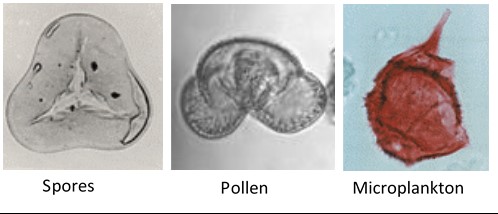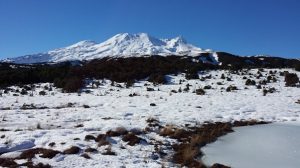By Tony Loy, Senior Geologist / Stratigrapher
In the September issue of our newsletter Dr Tim Wright described visiting a local primary school to introduce geoscience to a wider (and younger) audience. Click here to read if you missed it! Continuing Merlin’s involvement with the local community, I recently gave a talk to the Woolhope Naturalist’s Field Club Geology Section in Hereford, the subject being “Biostratigraphy in Hydrocarbon Exploration”.
The audience of amateur geologists from the local area, meet regularly throughout the year for both informal evening lectures and local field excursions. In my illustrated talk I introduced them to the field of biostratigraphic interpretation of microfossils, how it is used during the drilling of a well to pinpoint the age of the rocks penetrated, and to interpret their environments of deposition. I went on to explain how the resulting information is then used to correlate this well to others drilled nearby to aid our regional understanding. We covered topics such as “What is biostratigraphy and why do we use it (particularly microfossils) in the hydrocarbon industry?”, “What are biozones?”, “Why do we use different fossil groups?”, “Chemical processing methods” and “The various applications of biostratigraphy”.
One of the topics introduced was the concept of biosteering, which was greeted with amazement as I explained how a well could be deviated from the vertical and then steered to a target several kilometres away in a lateral direction from the rigsite. Once the target reservoir was reached, I described how biostratigraphy could be employed to keep the drillstring within the reservoir to maximise the volume of reservoir to be accessed.

I have to admit to a slight bias in my talk, as having worked as a palynologist for many years, I did tend to emphasise that particular branch of biostratigraphy and how kerogen in its various forms can tell us so much about not only the age of a rock and its environment of deposition, but its burial history, thermal maturity and the type of hydrocarbons different organic substances produce.
It was gratifying to see that the audience were attentive throughout and asked some searching and pertinent questions at the end of the talk. It is always a satisfying experience to be able to pass on knowledge that has been accrued over the years. If it stimulates the audience to look into the subject a bit more deeply or ask questions as to how the science can be advanced with new ideas, then the whole process is very worthwhile.
Merlin Energy is a multifaceted consultancy that covers a whole range of subsurface disciplines. We don’t just specialise in biostratigraphy, so if you have a particular problem that requires solving, or you just want a chat to see if we can assist you in any way, then please do get in touch.



